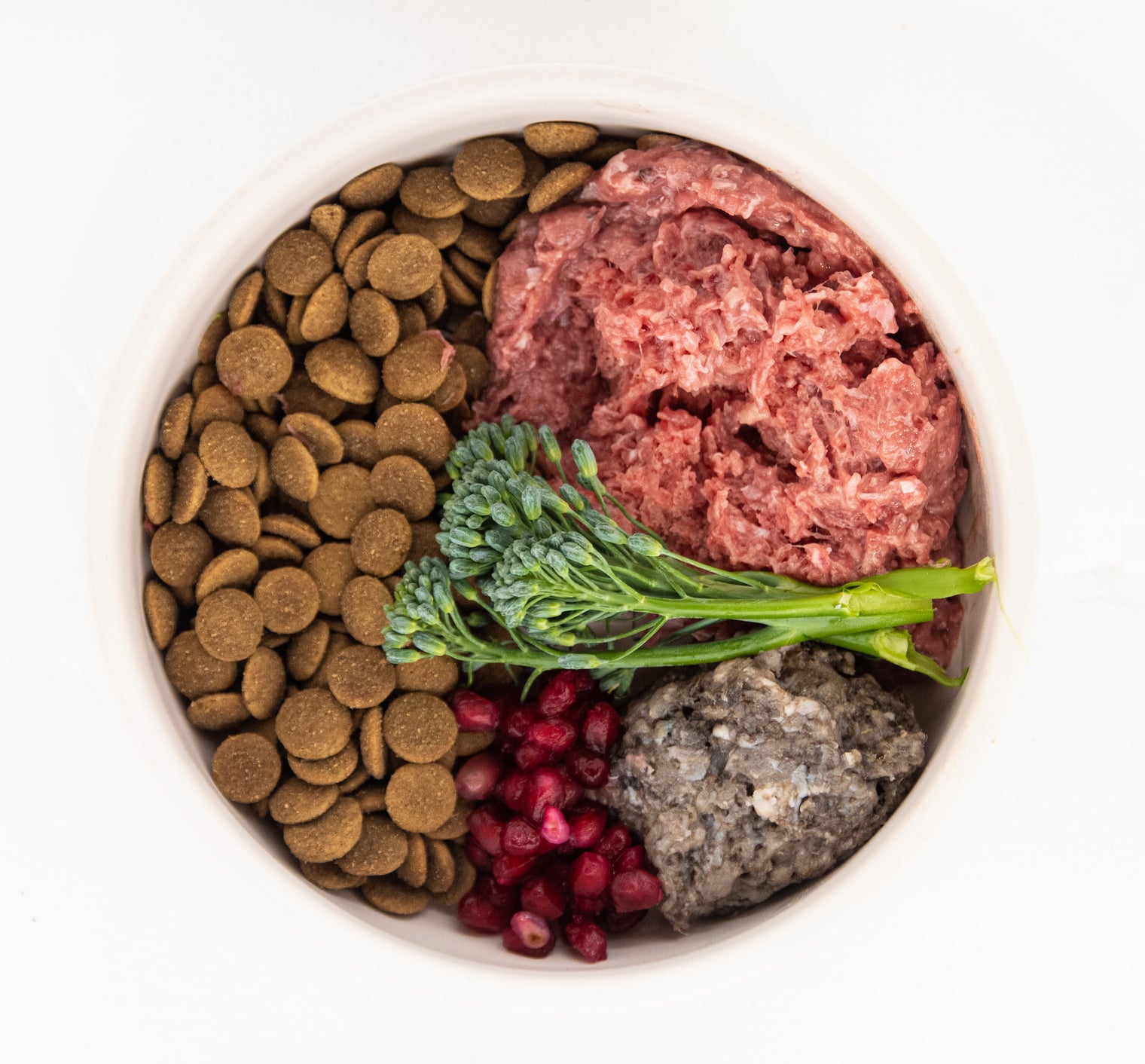While there will be bacteria present in raw dog food, for the pet food industry to use this as a reason to feed dry kibble over fresh food is simply a case of the pot calling the kettle black.
Don’t let people tell you shouldn’t raw feed because of bacteria risk.
While there will be bacteria present in raw dog food, for the pet food industry to use this as a reason to feed dry kibble over fresh food is simply a case of the pot calling the kettle black. The truth of the matter is, that all foods, from cheese, to kibble, to leafy green vegetables can harbor pathogenic bacteria or mould. In fact, aflatoxins are an extremely potent mycotoxin, making it one of the most dangerous organic compounds known to man. Aflatoxins can be found in kibble containing corn and have been responsible for the severe illness or death of domestic pets on too many occasions. For this reason, we actively recommend against feeding any food with processed corn or it’s derivatives. Salmonella, Clostridium, E.Coli and Lysteria bacteria in processed pet foods and treats have all been responsible for infections in pet owners. [1]
When it comes to feeding food safely, whether it be fresh or processed, for our dogs or for us, it is recommended to follow basic safe-food handling practices across all areas of food handling. From storage, to preparation, to cooking, serving and clean up, there are steps you can take to minimise risk of dangerous bacteria infecting your family and your pet. To help with these, we’ve summarised key points below so you can feel confident that you’re feeding your pet safely, regardless of what diet you choose:
1. If you feed kibble, please add apiaceous vegetables to the bowl. These include celery, fennel and parsnip. Studies have shown these types of vegetables can offset some of the damage caused by aflatoxins that can be present in these foods.
2. Be careful not to cross contaminate when preparing fresh food, ensuring you use different or cleaned utensils between meat types and when changing from plant to meat preparation.
3. Wash all bowls, scoops and serving utensils in hot soapy water after every use.
4. If it is not good enough for you to eat, do not feed it to your dog. Too often we hear of dogs falling ill due to being served foods that were ‘on the way out’. Perhaps the meat is just starting to turn, or the fruit and veg has gone a little off, either way, this is a breeding ground for bacteria, and only fresh food should be served to your pet.
5. Do not let your pet snack on bones that have been sitting in the yard for prolonged periods. A fresh bone should be consumed in one sitting and whatever is left should be disposed of.
6. Defrost raw meats in a container in the fridge. Do not defrost raw meat on the bench, in the microwave or in warm water.
7. Do not store kibble in containers. Instead, store only in the bag it came in and be sure to tightly seal between each use.
8. Do not handle kibble with your hands. If you touch your face, or food before washing your hands thoroughly you risk picking up harmful bacteria. For this reason, avoid letting children handle kibble.
9. Do not allow food to sit out. If your pet has walked away from the food, place immediately back into the fridge, or dispose of the food in the bin. This applies to fresh and processed diets.
By keeping these key points in mind, you can safely feed your pet fresh food. Your dog’s digestive tract is well suited to tolerating raw meat product, and infection from these foods is rare. The only instances we may not recommend you feed raw food to your pet is if your animal has a significantly damaged gut microbiome in need of repair or is suffering from certain digestive disorders or illnesses. In these cases, we can help you provide a gently cooked fresh food diet and use targeted supplementation to help your pet recover.
[1]. Kępińska-Pacelik J, Biel W. Microbiological Hazards in Dry Dog Chews and Feeds. Animals (Basel). 2021 Feb 27;11(3):631. doi: 10.3390/ani11030631. PMID: 33673475; PMCID: PMC7997464.




